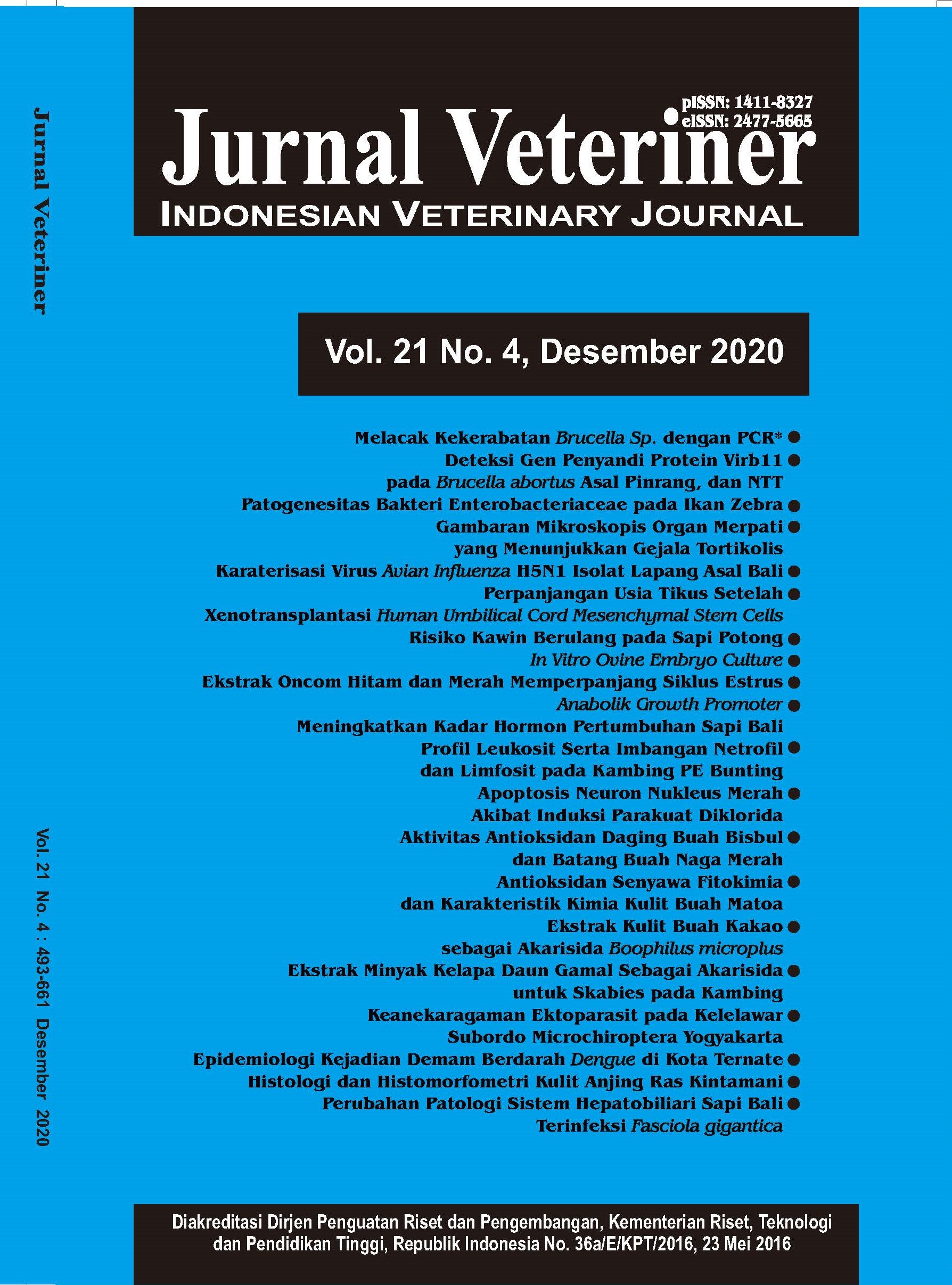Perubahan Patologi Sistem Hepatobiliari Sapi Bali Terinfeksi Fasciola gigantica
PATHOLOGICAL ALTERATION OF BALI CATTLE HEPATOBILIARY SYSTEM INFECTED WITH FASCIOLA GIGANTICA
Abstract
Liver fluke infections is an important parasitic disease that common attack cattle, buffalo and others ruminant. The disease in the tropics is caused by Fasciola gigantica trematodes. Fasciolosis found in Bali cattle besides causing high economic loss also has the opportunity infect humans. This study aims to determine the pathology changes of Bali cattle hepatobiliary system infected by F. gigantica. In January
2019 were examined a hundred of liver tissue Bali cattle. Based on the sex as many as 75 bali cattle are cows and 25 are bulls. On macroscopic examination was found fifteen bali cattles in gallbladder containing of F. gigantica. In positive Fasciolosis the surface of liver look uneven with enlargement of lymph nodes. The tissue of Bali cattle liver infected with F. gigantica is cut into 1x1x1 cm and put in a pot that has been filled with 10% neutral buffered formaline. The fixed tissue then processed in a tissue processor and stained with hematoxylin-eosin (HE). Microscopic examination was found bile ducts proliferation and blocked of the lumen accompanied by cholangio cirrhosis. Found longitudinal pieces of Fasciola gigantica
liver fluke surrounded by fibrous connective tissue and multifocal coagulative necrosis with fibroblast proliferation. In some location the infiltration of neutrophil cells around the bile ducts can also be seen. Congestion, bleeding, and neutrophil infiltration are also seen in areas of necrosis. In the bile duct wall bleeding, adenomatus hyperplasia, infiltration of mononuclear cells with mild intensity and foci of
calcification are found. It can be concluded that there was a change with severe intensity accompanied by chronic inflammation in the hepatobiliary system of Bali cattle with Fasciolosis.



















